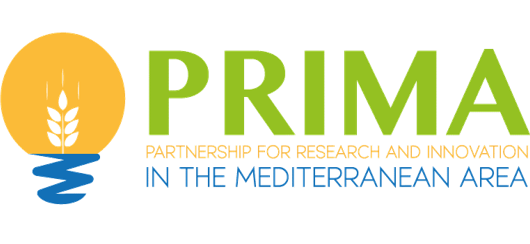The current document contains the communication and dissemination plan conducted and organized by WP6 leader: SEMIDE. The objective of this document is to organize the communication and dissemination activities that will be carried out for the entire duration of SUPROMED project by all partners to attract and inform the targeted audience/stakeholders and general public on project services, activities, progress and results.
This is achieved through identifying the following points: objectives (why), target audience (who), key messages (what), media supports and information distribution channels (how), materials (with what), timing (when) and resources (both financial and human resources). Furthermore, the plan contains the methodology of the dissemination and communication management and the implementation plan. Also, it has set some achievement indicators to evaluate the effectiveness and the success of these activities. To facilitate communication between partners, some tools and rules have been set up and are detailed in chapter 3 ‘Internal communication’.
Abstract: Global energy consumption and costs have increased exponentially in recent years, accelerating the search for viable, profitable, and sustainable alternatives. Renewable energy is currently one of the most suitable alternatives. The high variability of meteorological conditions (irradiance, ambient temperature, and wind speed) requires the development of complex and accurate management models for the optimal performance of photovoltaic systems. The simplification of photovoltaic models can be useful in the sizing of photovoltaic systems, but not for their management in real time. To solve this problem, we developed the I-Solar model, which considers all the elements that comprise the photovoltaic system, the meteorologic conditions, and the energy demand. We have validated it on a solar pumping system, but it can be applied to any other system. The I-Solar model was compared with a simplified model and a machine learning model calibrated in a high-power and complex photovoltaic pumping system located in Albacete, Spain. The results show that the I-Solar model estimates the generated power with a relative error of 7.5%, while the relative error of machine learning models was 5.8%. However, models based on machine learning are specific to the system evaluated, while the I-Solar model can be applied to any system. Keywords: photovoltaic energy; irrigation; solar pumping; real-time management
Abstract: Further research is required on the measurement of crop evapotranspiration (ETc) to produce new or updated crop coefficients for a large number of crops using accurate weighing lysimeters. However, large weighing lysimeters are sometimes expensive and are not portable, and different prototypes of small-sized lysimeters may be a feasible alternative. This study evaluated the performance of a removable mini-lysimeter model to measure ETc and derive crop coefficients using a long-established large precision weighing lysimeter over a two-year period. The study was conducted during the 2017 and 2018 barley and potato growing seasons, respectively, at a lysimeter facility located in Albacete (southeast Spain). ETc values were determined using daily mass change in the lysimeters. Irrigation was managed to avoid any water stress. In the barley season, the minilysimeter underestimated the seasonal ETc by 2%, the resulting errors in barley ETc estimation were an MBE of −0.070 mm d−1 and an RMSE of ±0.289 mm d−1 . In the potato season, the mini-lysimeter overestimated the cumulative ETc by 5%, the resulting errors in potato ETc measurement were an MBE of 0.222 mm d−1 and an RMSE of ±0.497 mm d−1 . The goodness of fit indicators showed a good agreement between the large and mini-lysimeter barley and potato ETc measurements at daily time step. Single (Kc) and dual crop coefficients (Kcb, crop transpiration + Ke, soil evaporation) were derived from the lysimeter measurements, the grass reference evapotranspiration (ETo) and the FAO56 dual Kc approach; after temperate standard climate adjustment, mid-season values were Kc mid (std) = 1.05 and Kcb mid (std) = 1.00 for barley; and Kc mid (std) = 1.06 and Kcb mid (std) = 1.02 for potato. The good agreement found between Kcb values and fc will allow barley and potato water requirements to be accurately estimated.
Keywords: lysimeter facility; mini-lysimeter performance; ET partitioning; single crop coefficient; dual crop coefficient; canopy cover; grass reference evapotranspiration; FAO56 approach
ABSTRACT
The continuing decline in water availability for agricultural uses and increased energy costs have made it necessary to improve water productivity in crops. The optimized regulated deficit irrigation (ORDI) methodology was developed to maximize the yield of annual crops under water-scarce conditions, either by reaching a specific deficit target or distributing a limited volume of irrigation water throughout the growing season (ORDIL). The objective of this study was, for a limited amount of available irrigation water, to determine the effect of ORDIL methodology on yield, agronomic and irrigation water productivity and water footprint of a purple garlic cultivar crop under semi-arid conditions. To this end, five irrigation treatments were evaluated from 2015 to 2017 on an experimental farm located in semi-arid conditions (Albacete, Spain): no deficit (ND), and four with different volumes of available irrigation water, corresponding to 100% (T100), 90% (T90), 80% (T80), and 70% (T70) of garlic net irrigation requirements for the weather conditions of the intermediate typical meteorological year (2750 m3 ha-1). Yield decreased with increasing deficit, being up to 25% less for T70 compared with ND. However, the T70 ORDIL treatment attained the greatest average irrigation water productivity (5.30, 4.32 and 2.53 kg m-3 for 2015, 2016 and 2017, respectively) and the lowest average water footprint (349, 416 and 631 m3 Mg-1), while ND exhibited the greatest total water footprint in the process (18%, 14% and 4% greater than T70).

